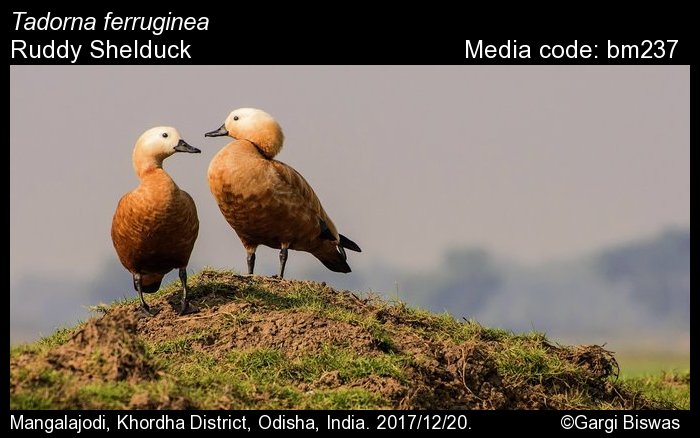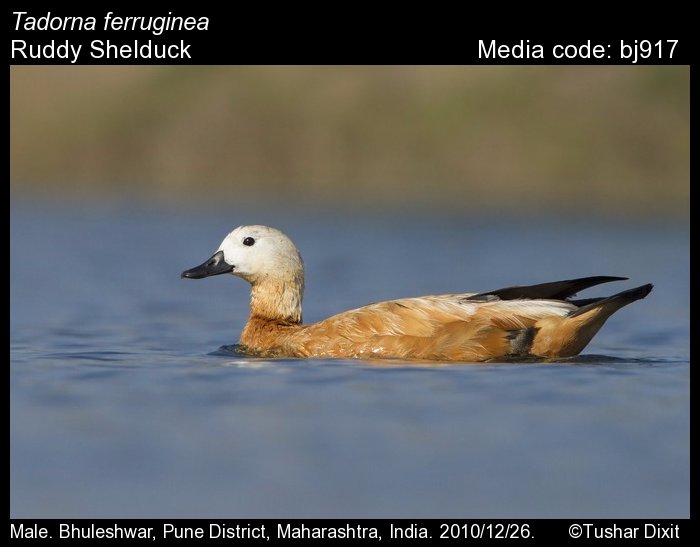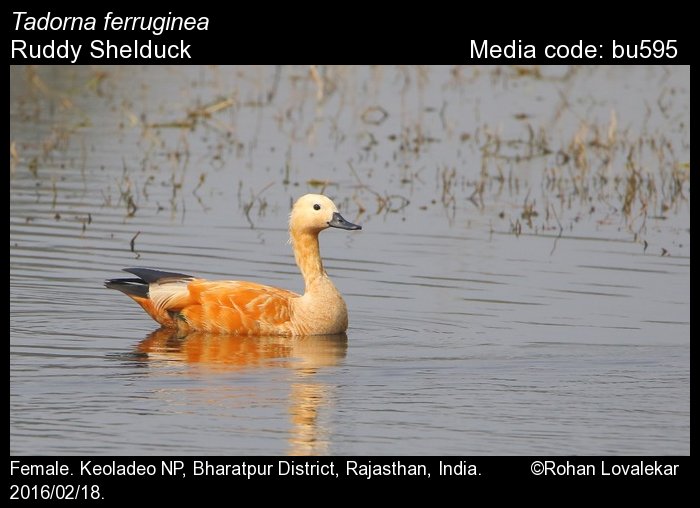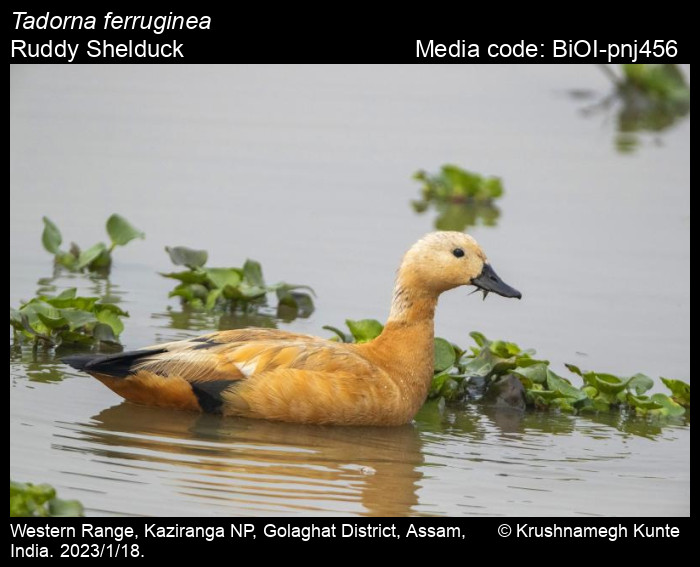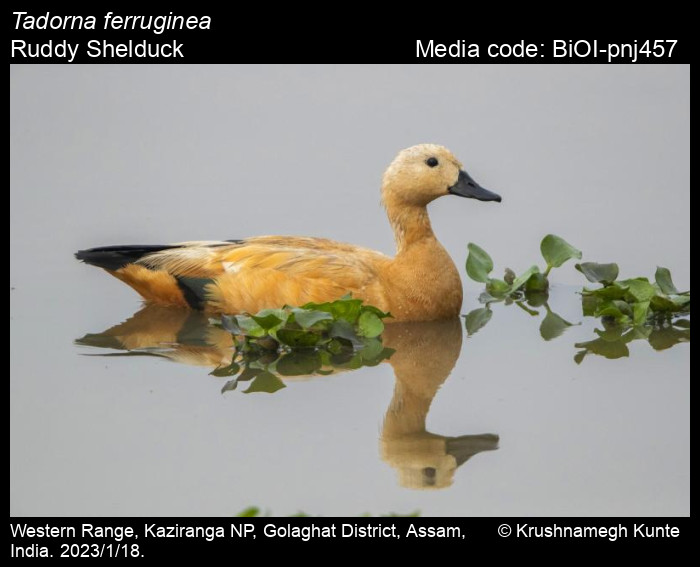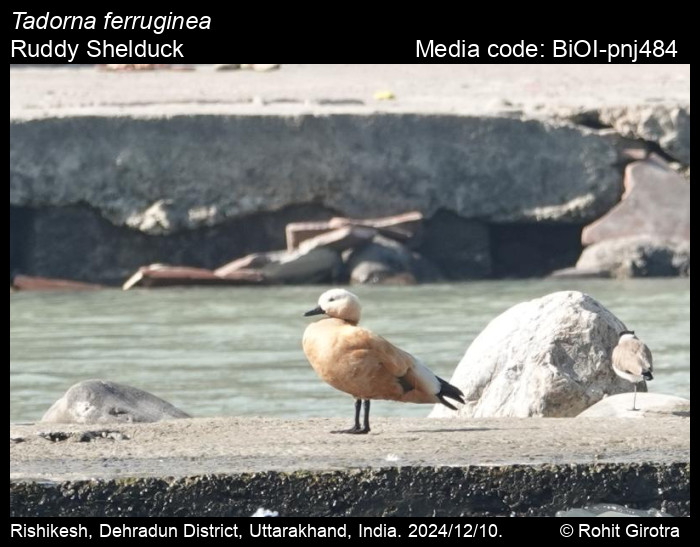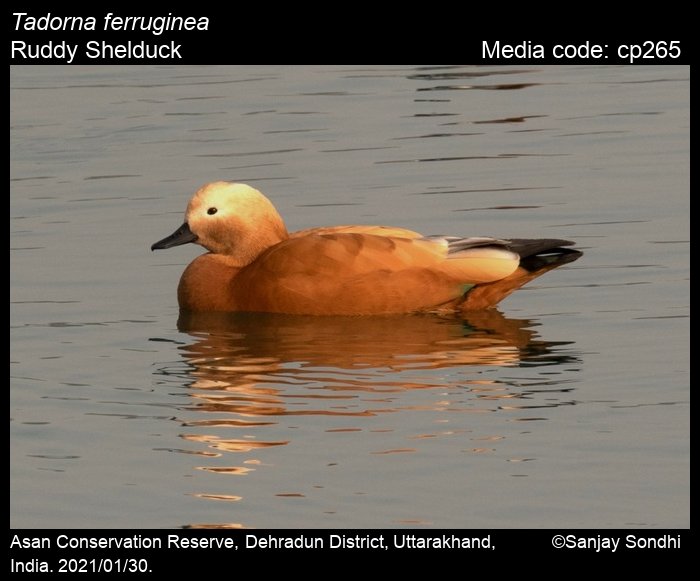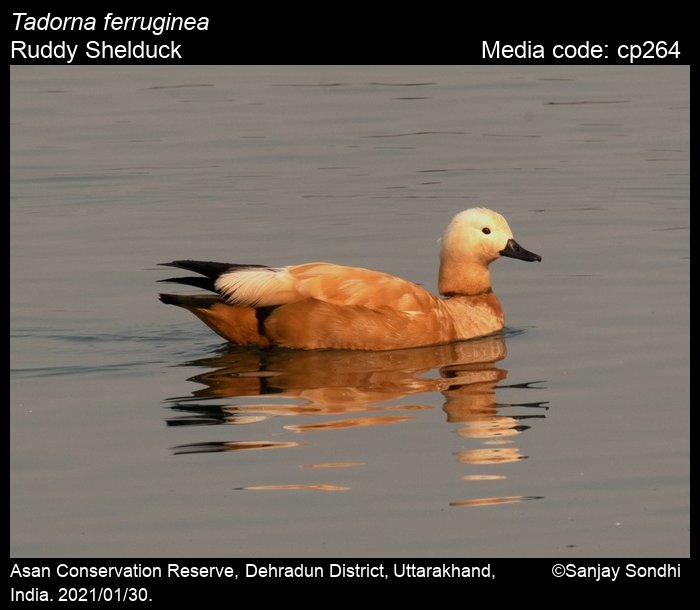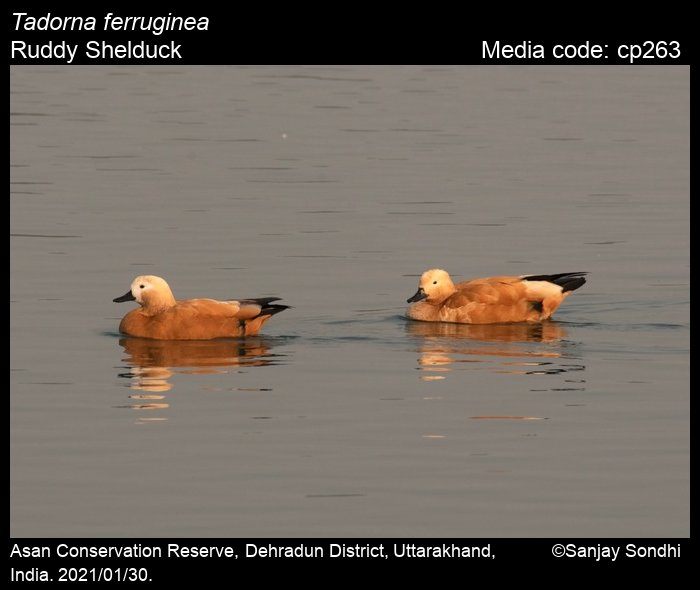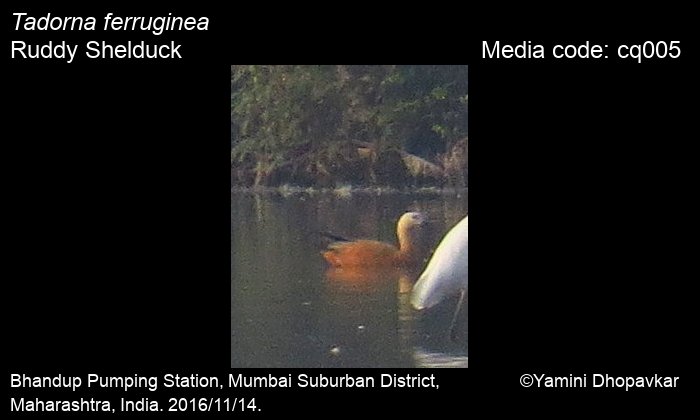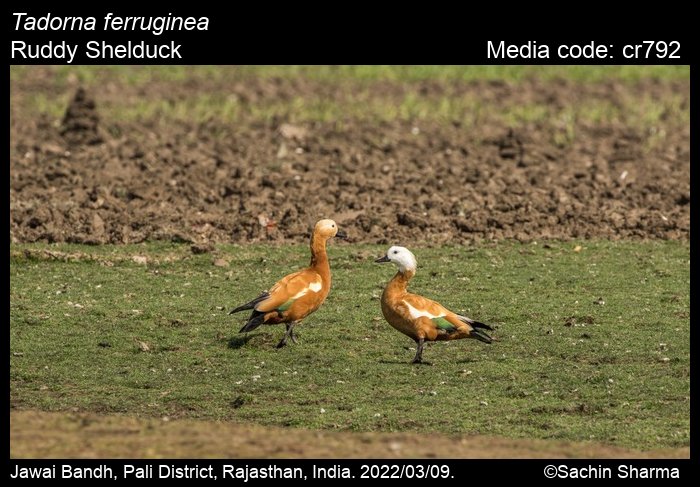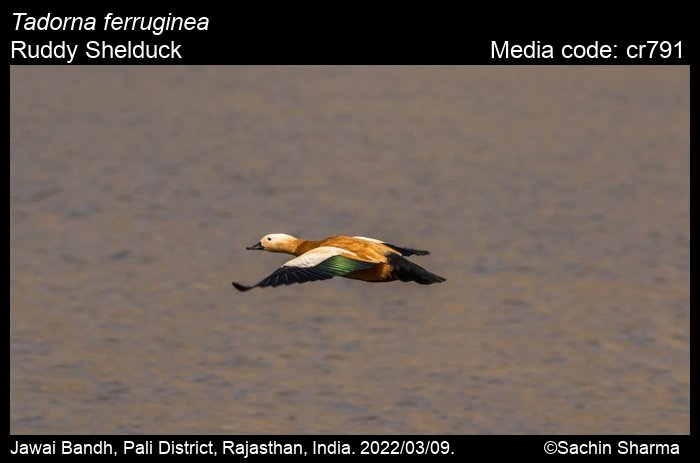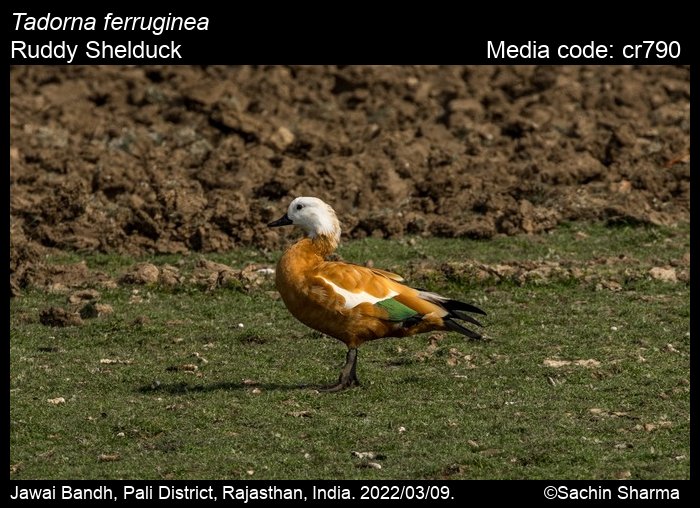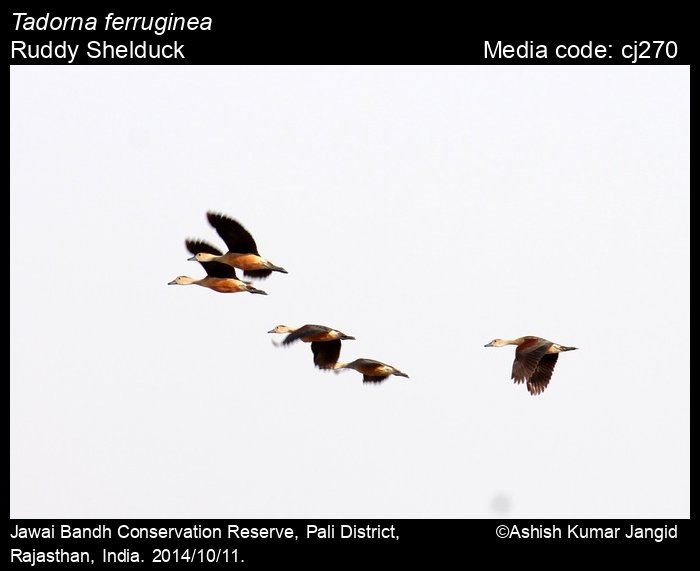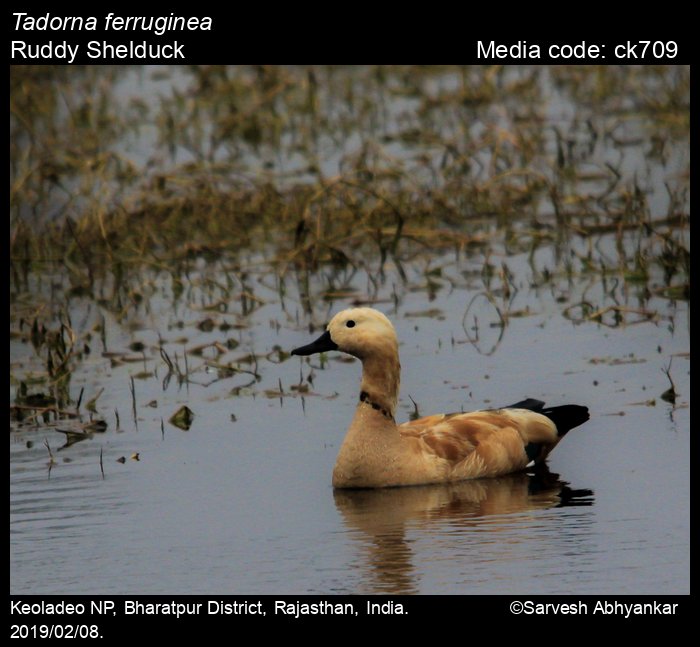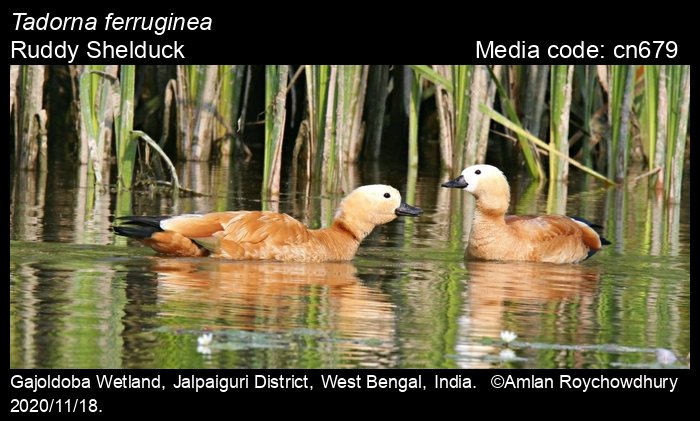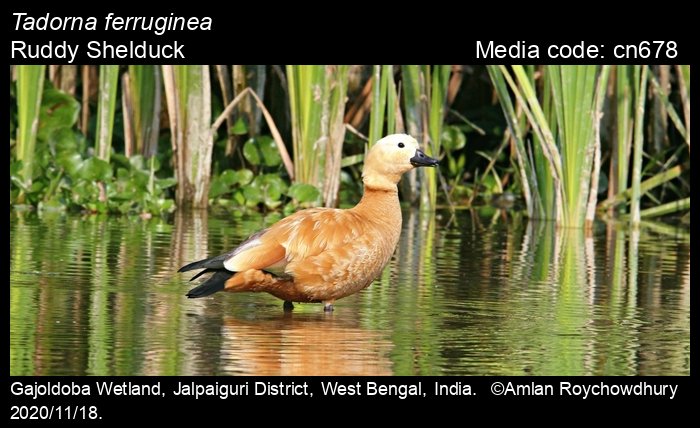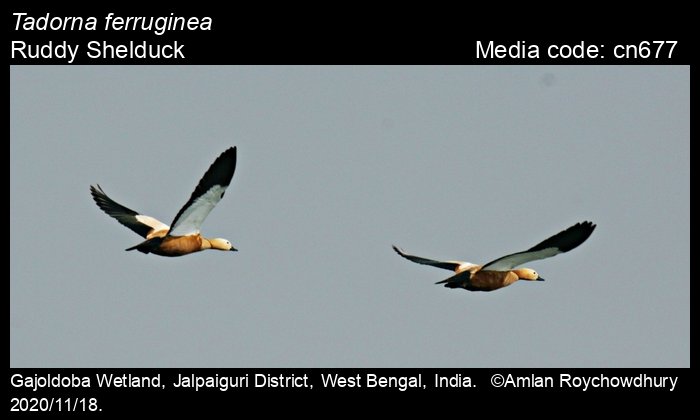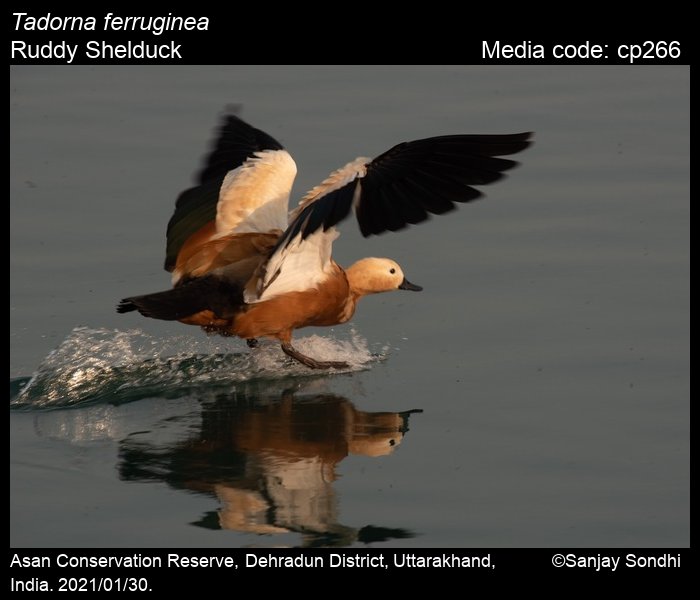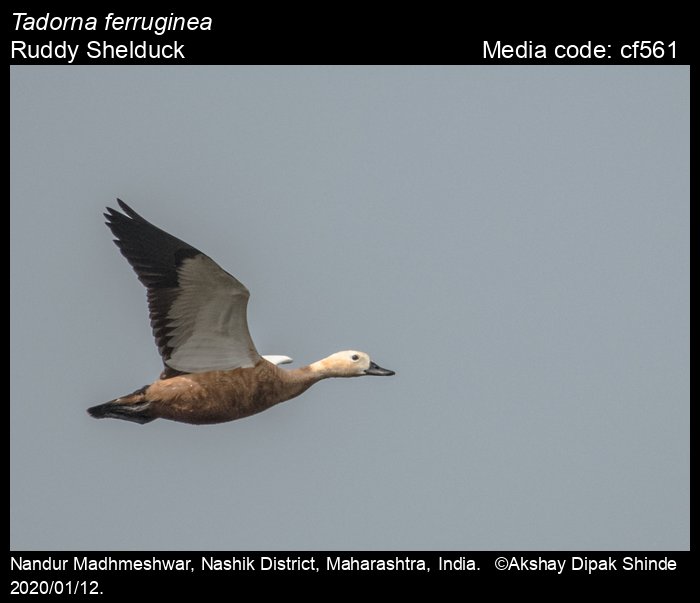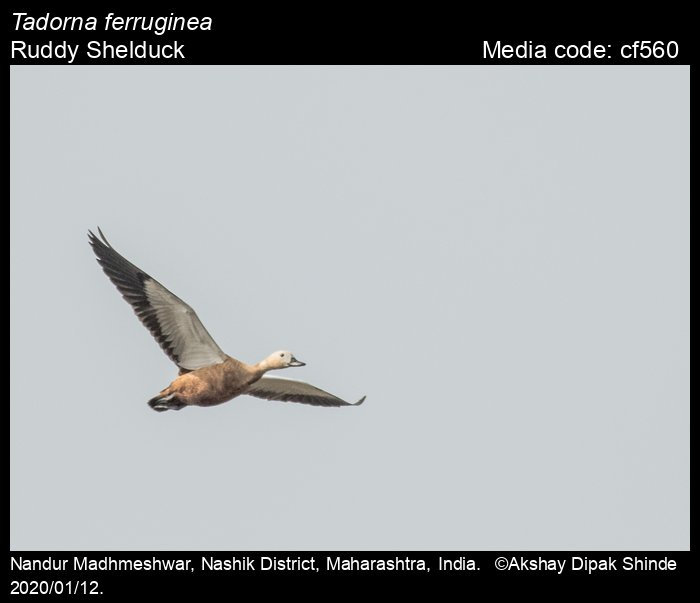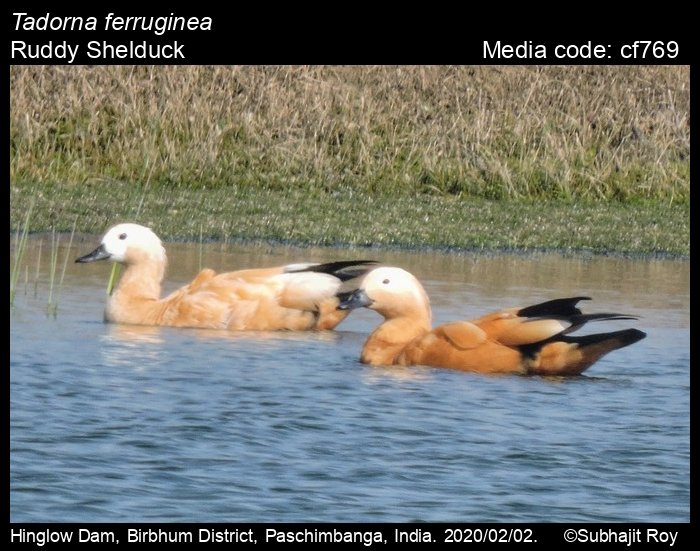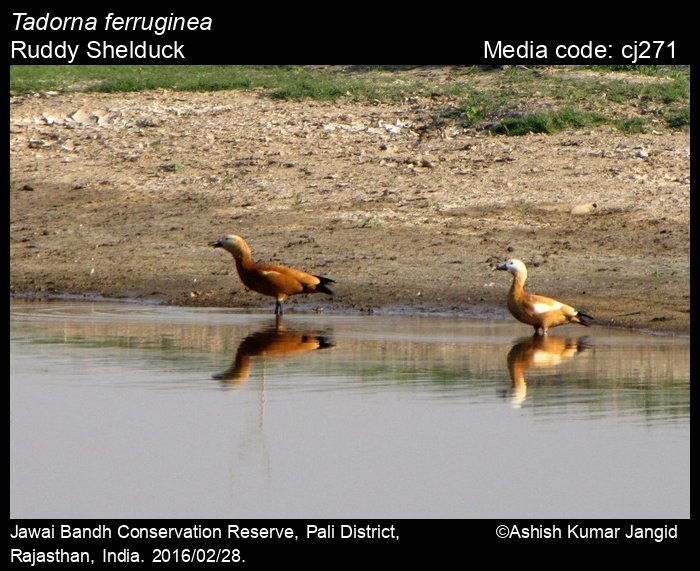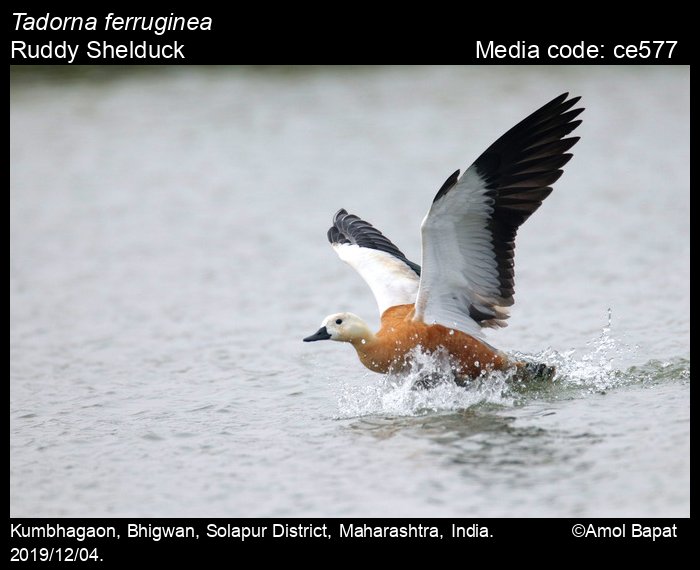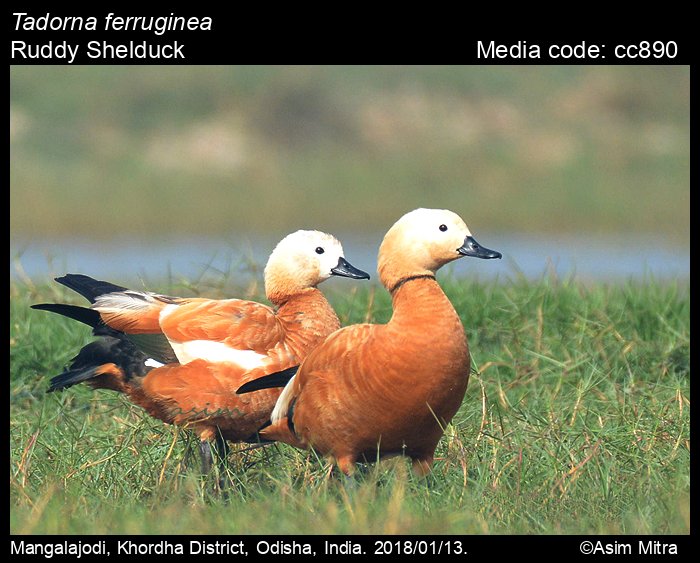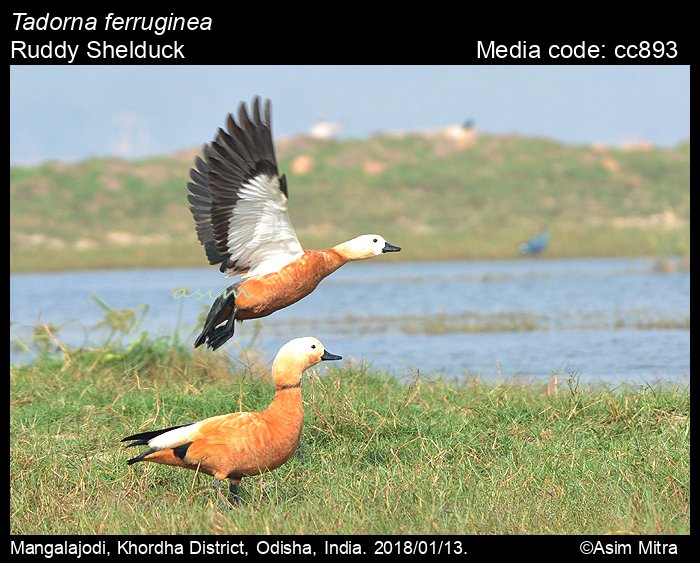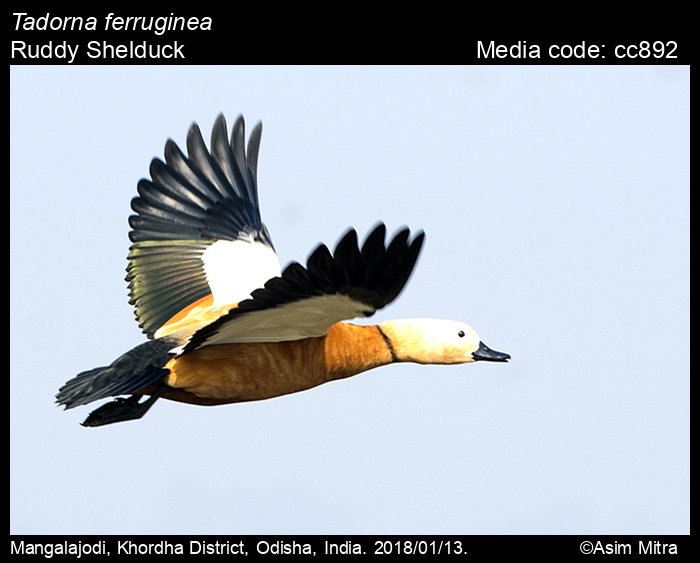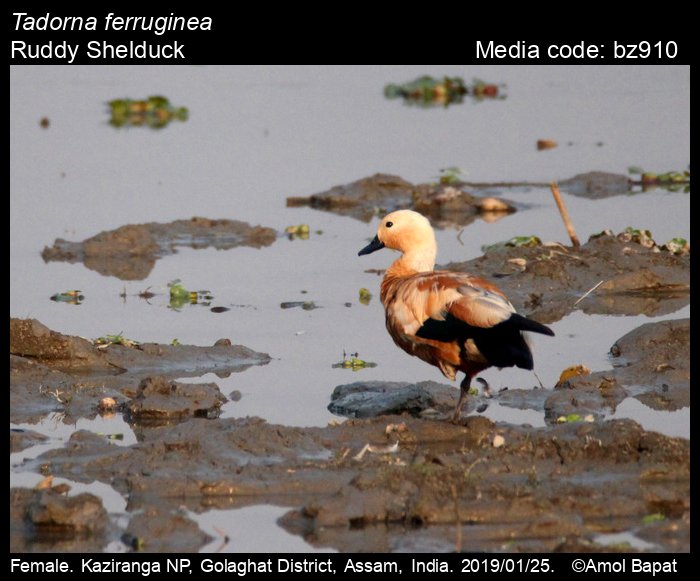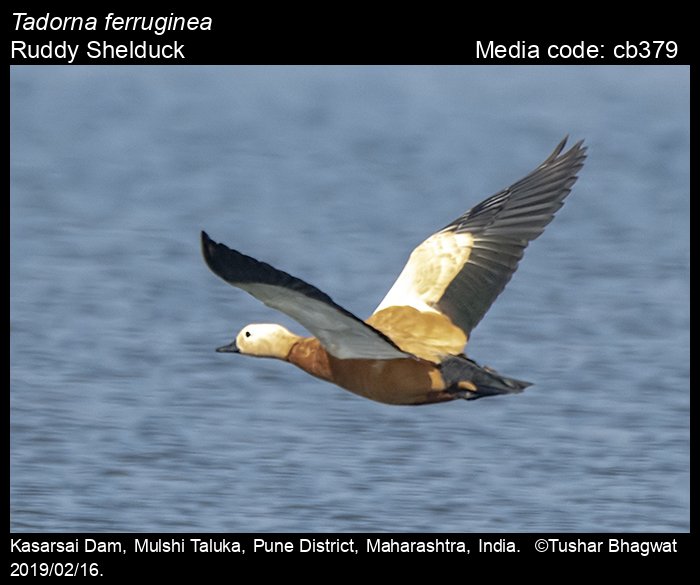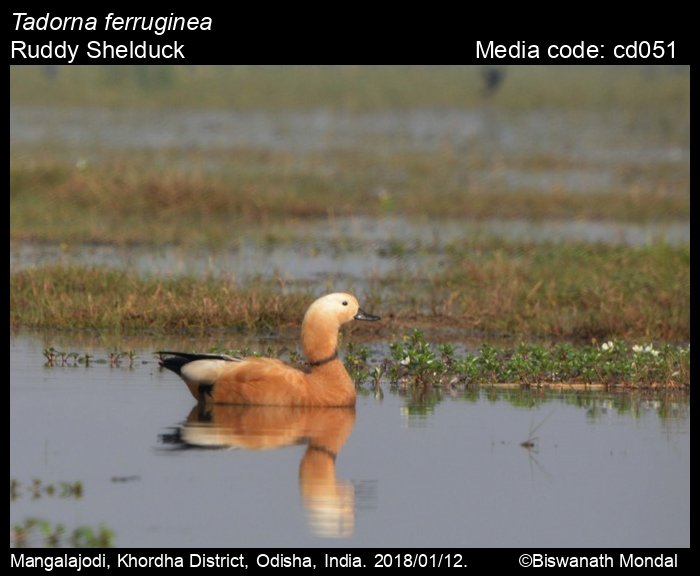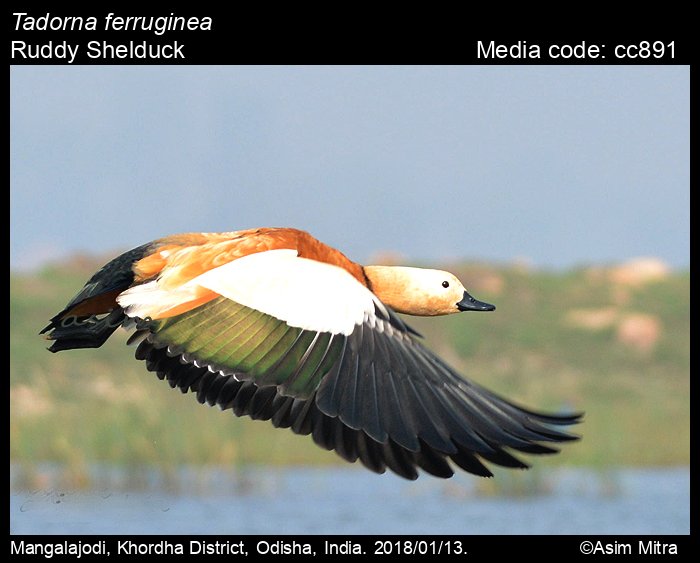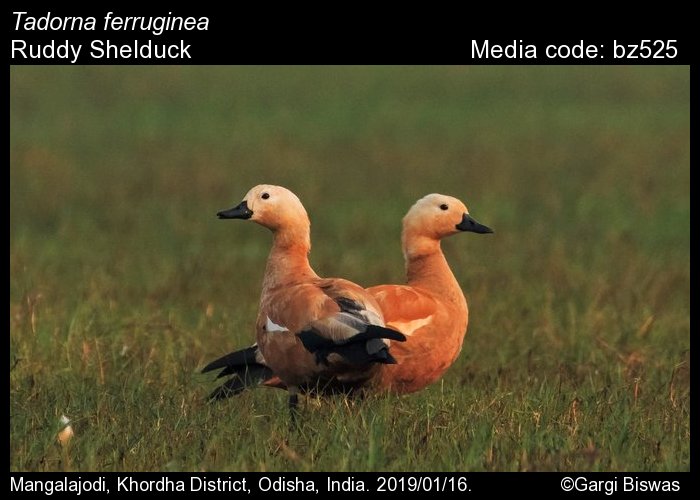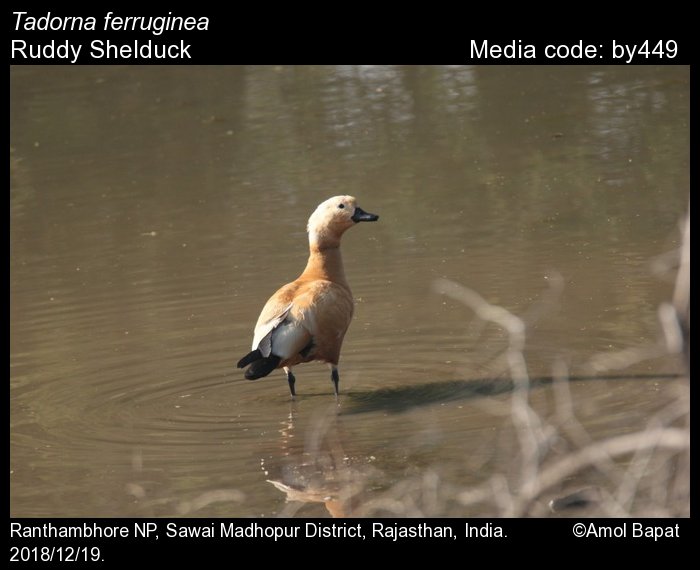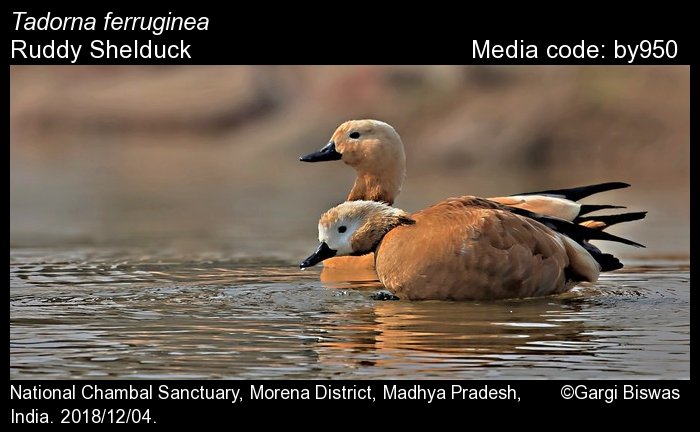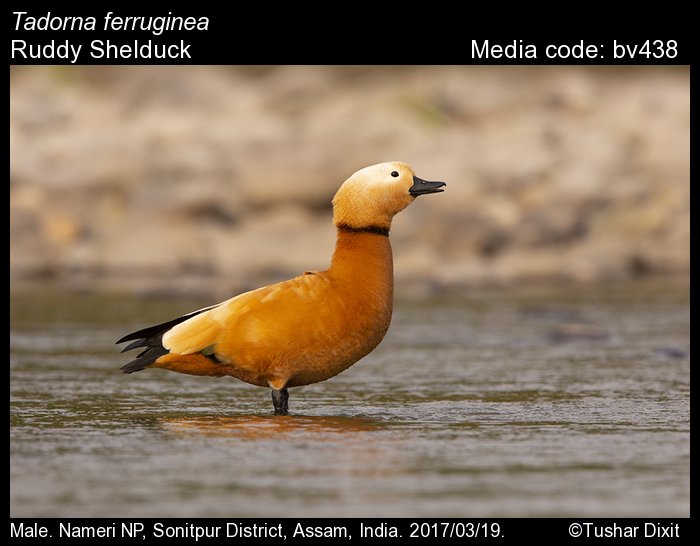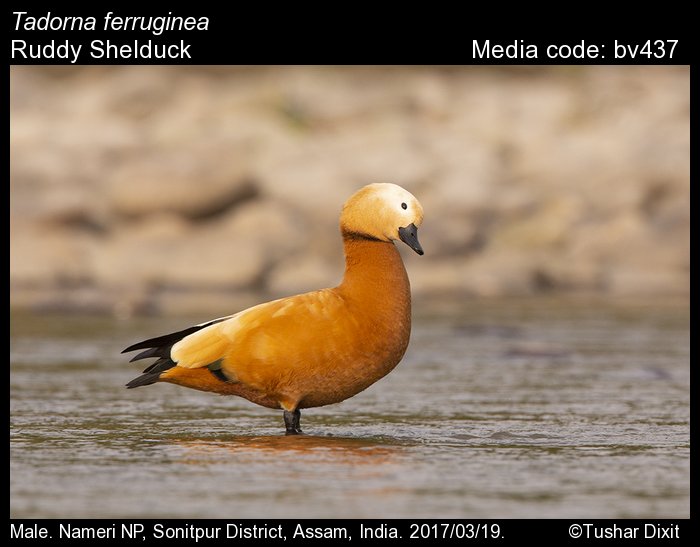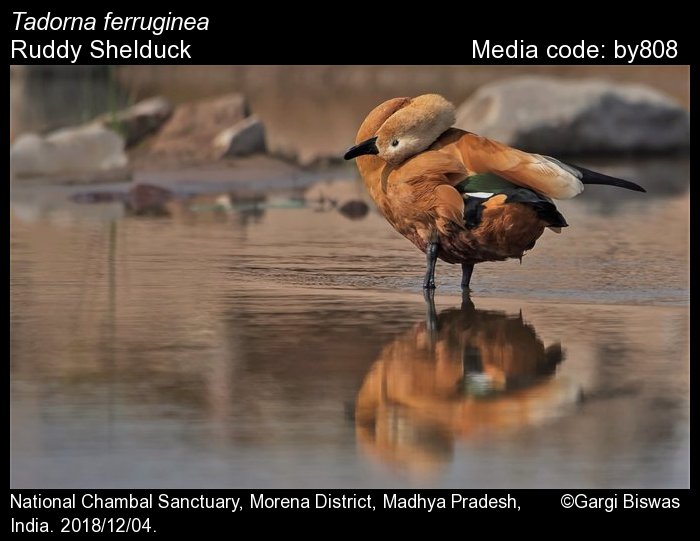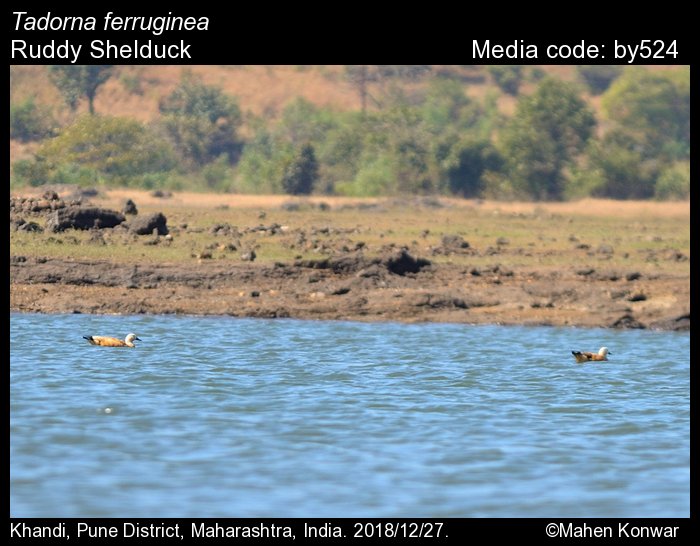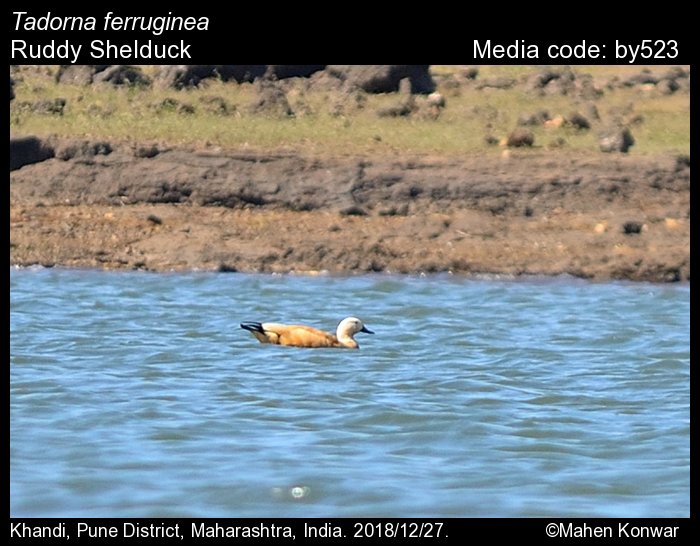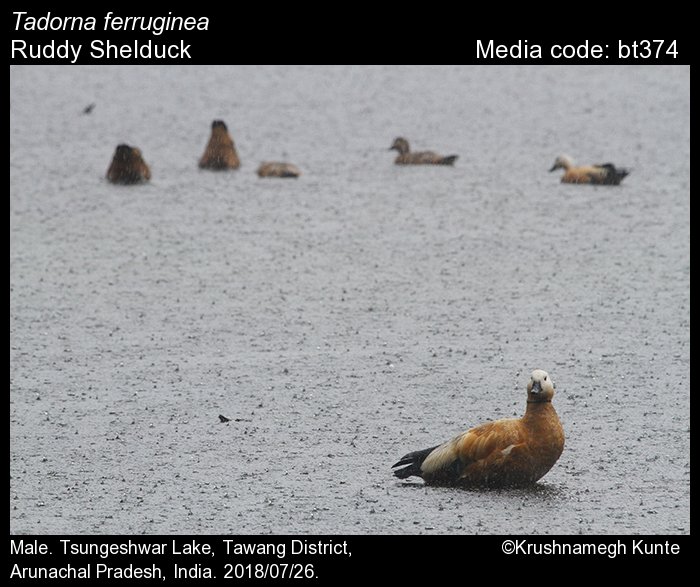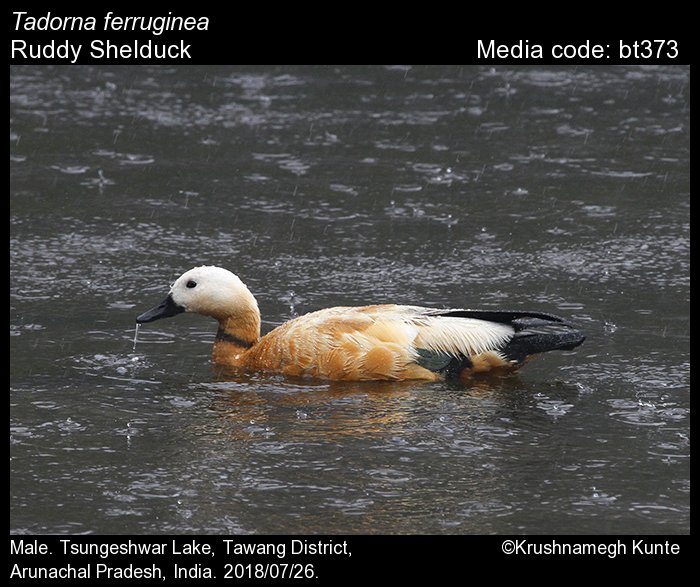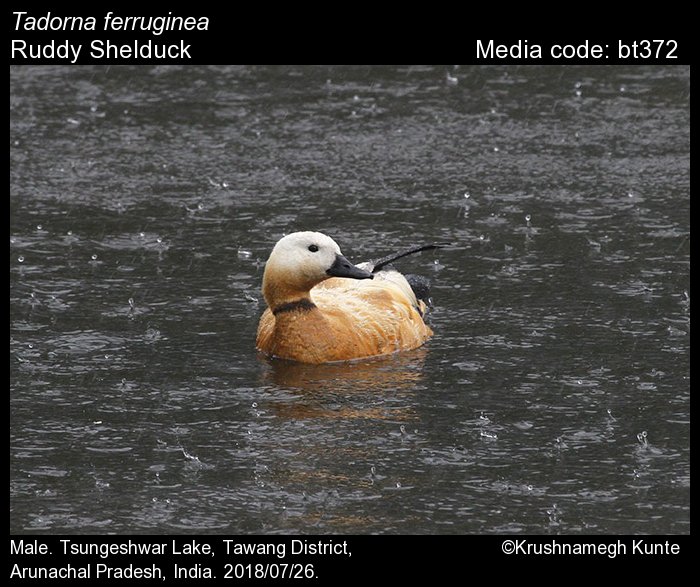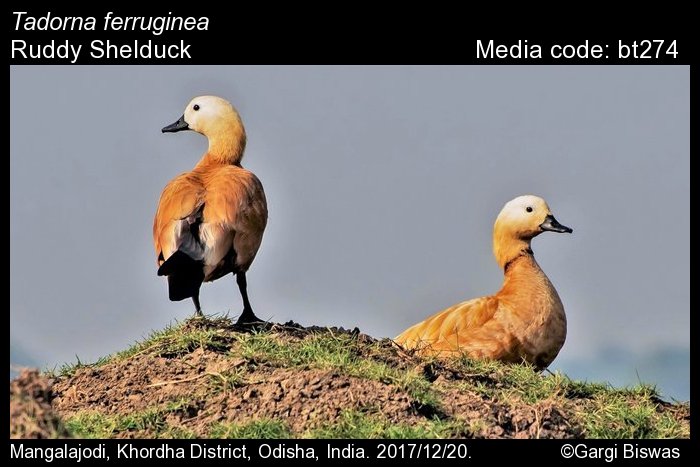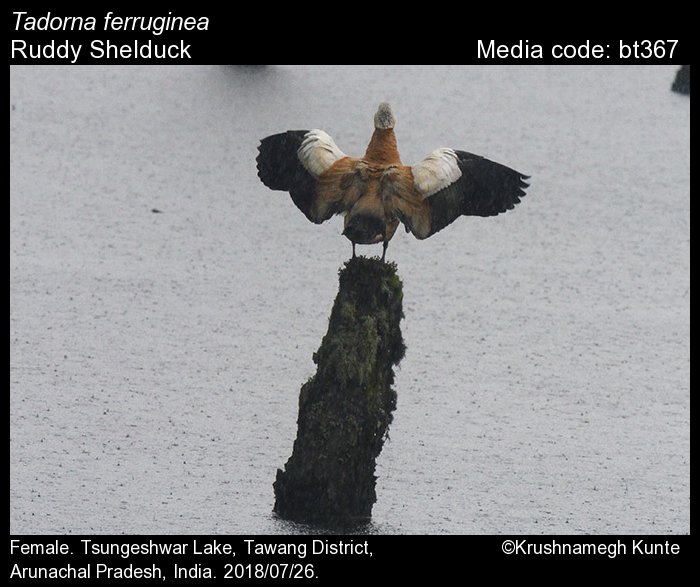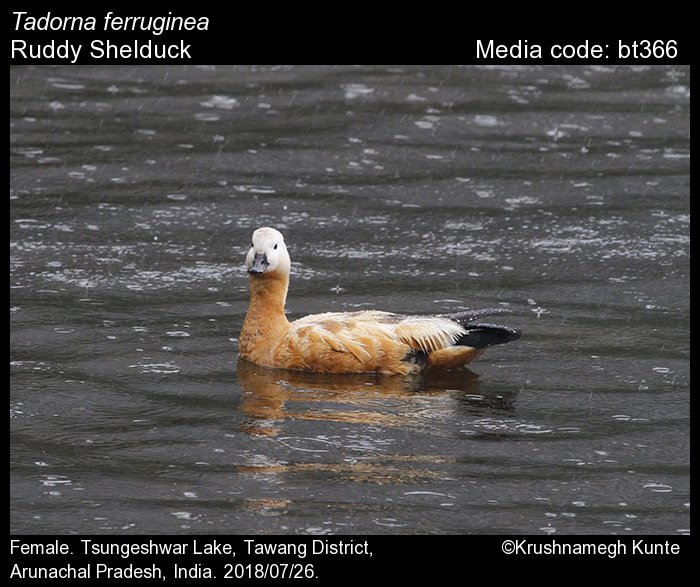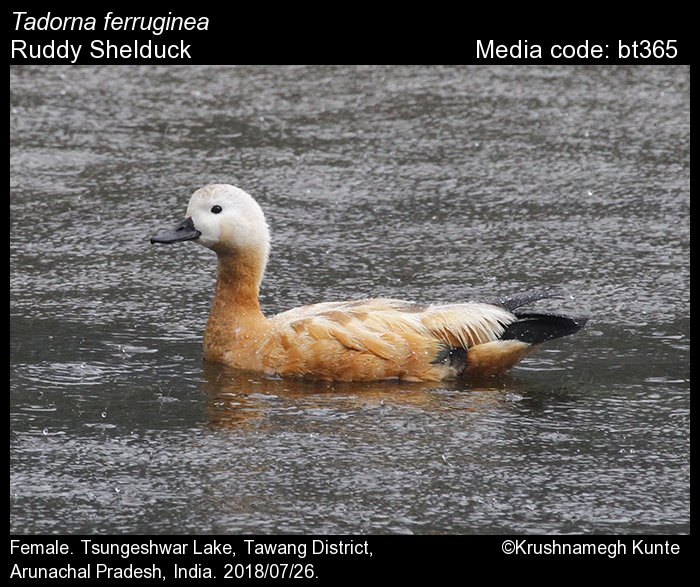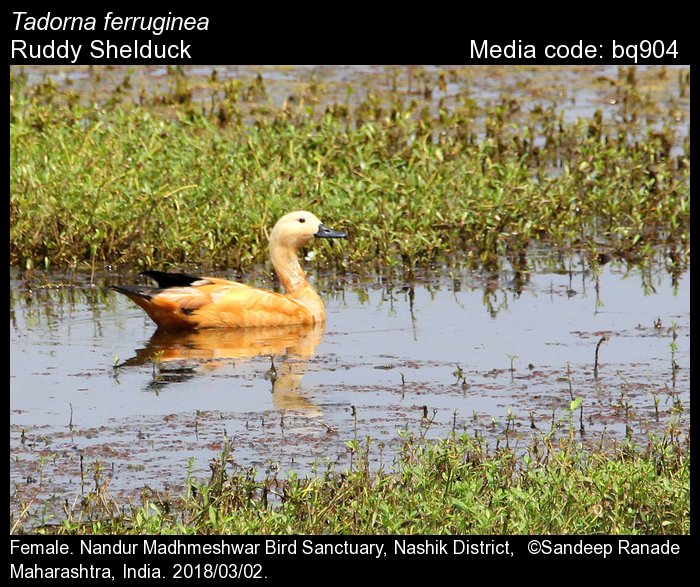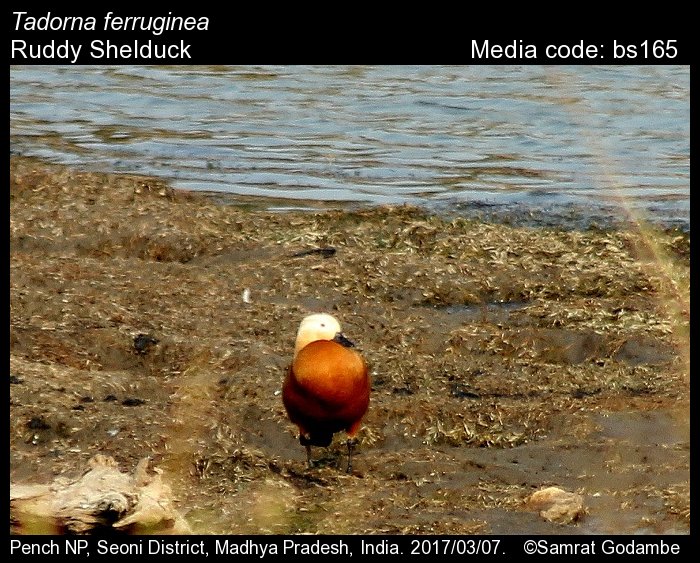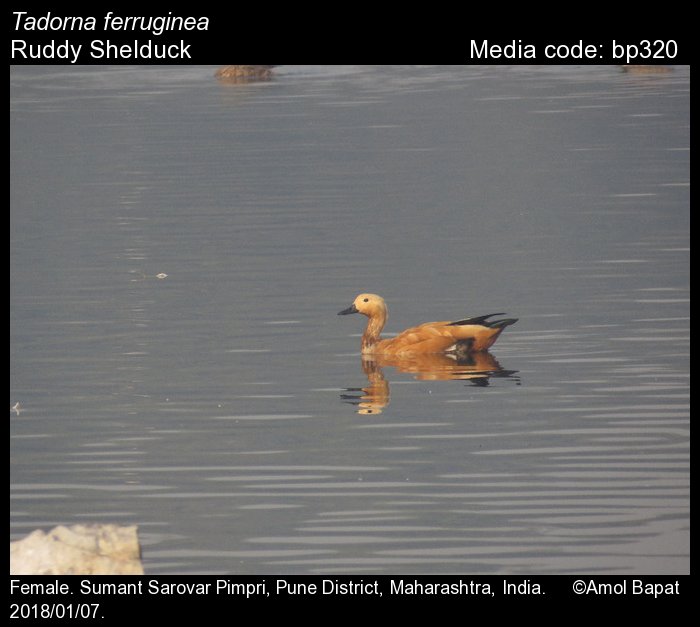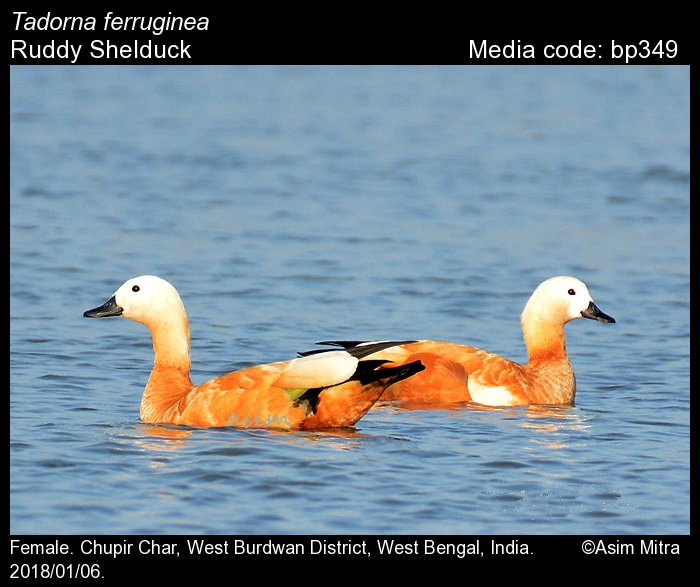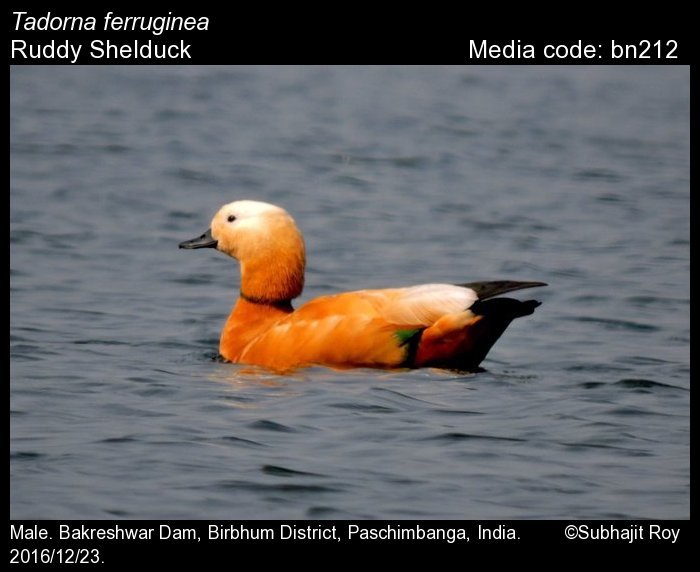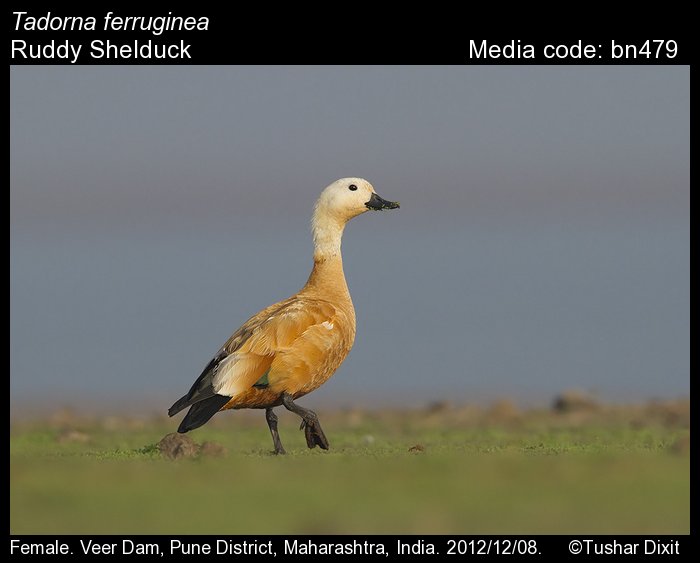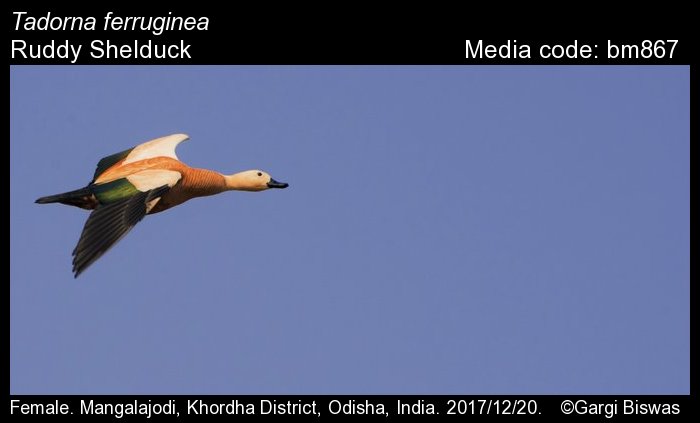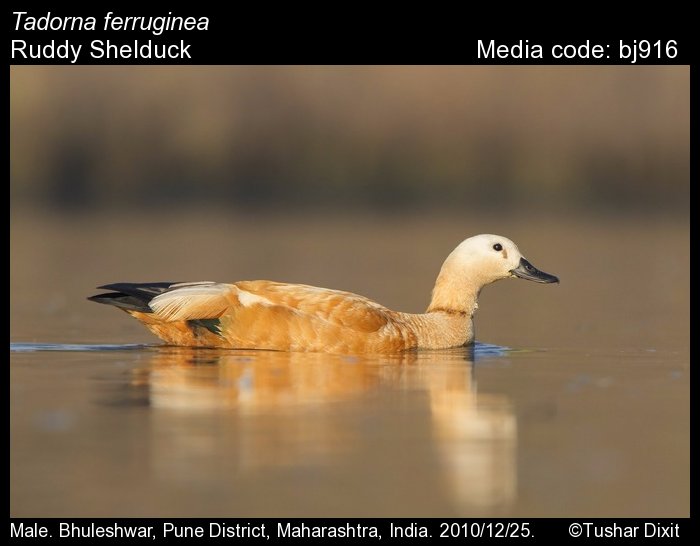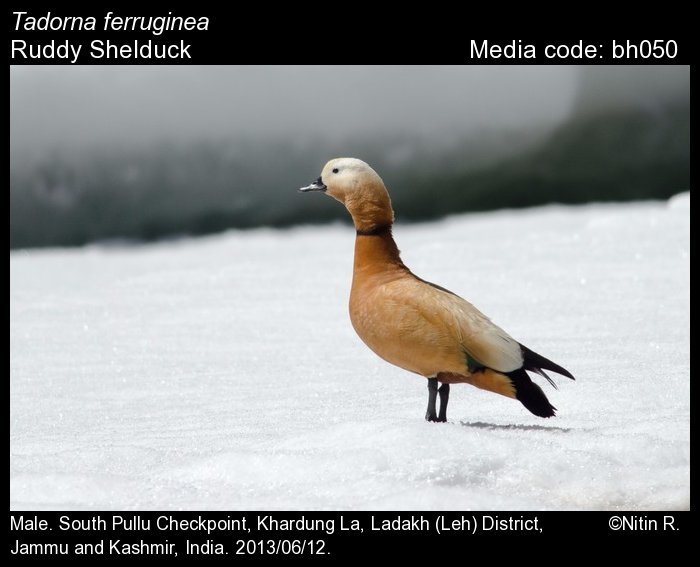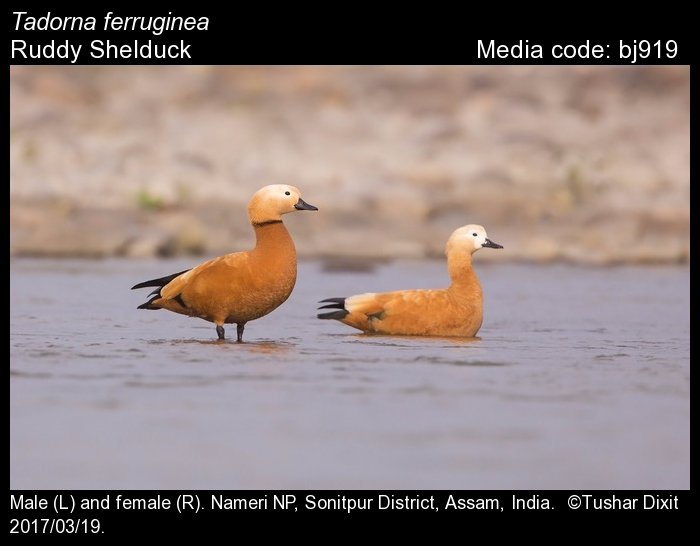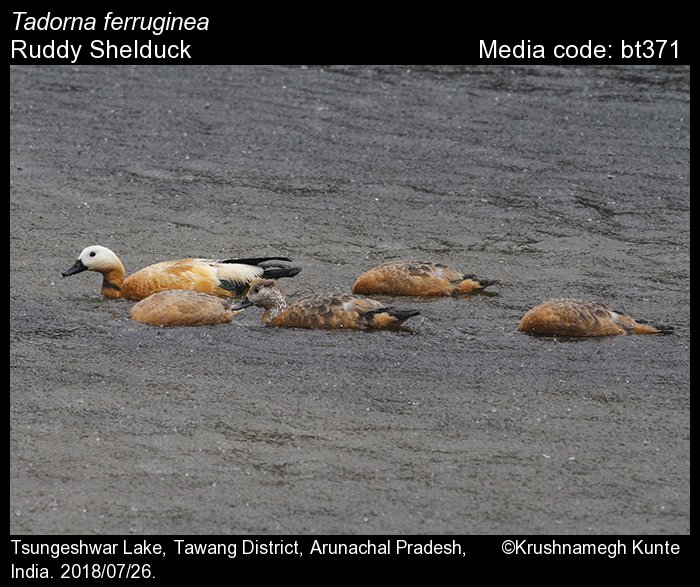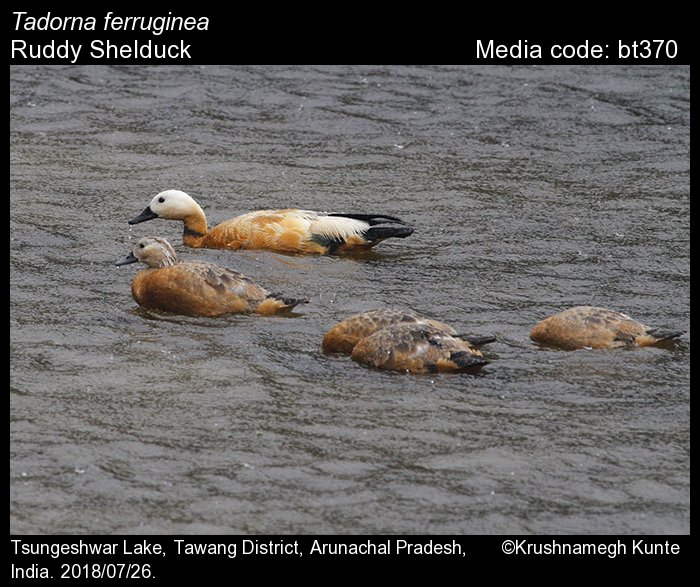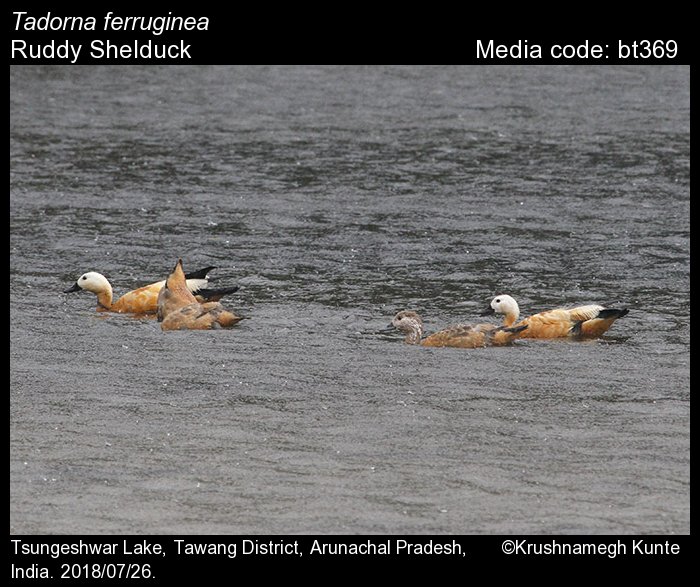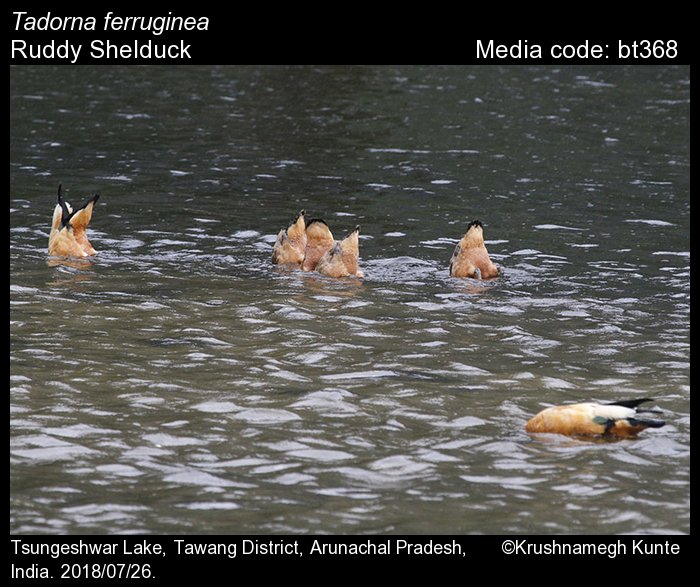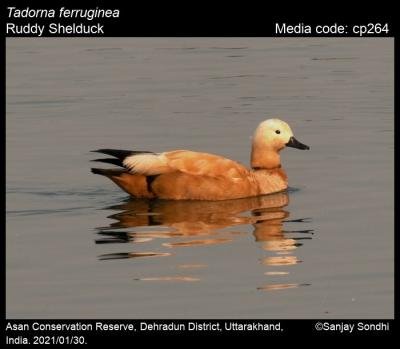
Subspecies in India
Old Taxonomy: Anas ferruginea Pallas, 1764.
Photo Gallery and Species Biology
Breeding Season: May and June; in high altitude lakes and swamp above 4000 m. Pair often assumed to be life-long. Strongly territorial only around nest-site.
Nest: The nest is made in holes or cavity on ground with feathers or some time with grasses.
Eggs: 6 to 10 glossy, ivory white eggs. 62–72 mm × 45–50 mm.
Size: 61–71 cm
Distinguishing characters:
Adult: A large orange-brown or cinnamon-brown duck with paler head and neck, a prominent metallic green speculum on wing with a white patch on wing-coverts, and black tail. Bill blackish grey, legs and feet, and eyes dark black.
Young/immature: Like female, but with grey wash on scapulars and tertiaries.
Similar Species in India: It is a very distinctive species and cannot be confused with other.
Usually seen in pairs and small parties. Prefers large open lakes and rivers with sandbanks. Usually a very alert species, can get disturbed with slight movement, difficult to approach. Often gives alarm calls up on seeing an intruder. Territorial forfood patches as well as during breeding.
Food: It is omnivorous. Its diet includes molluscs, crustaceans, aquatic insects, ampbhibians, small fishes, aquatic plants, and algae.
Call/Song: A loud, nasal, sharp aahg-aan similar to graylag goose when disturbed.
Migration Status: Migratory, winters in the lower elevations throughout India.
IUCN Status: Least Concern.
| State | Jan | Feb | Mar | Apr | May | Jun | Jul | Aug | Sep | Oct | Nov | Dec | No date |
|---|---|---|---|---|---|---|---|---|---|---|---|---|---|
| Andaman and Nicobar Islands | |||||||||||||
| Andhra Pradesh | |||||||||||||
| Arunachal Pradesh | |||||||||||||
| Assam | 2 | 2 | |||||||||||
| Bihar | |||||||||||||
| Chandigarh | |||||||||||||
| Chhattisgarh | |||||||||||||
| Dadra & Nagar Haveli | |||||||||||||
| Daman & Diu | |||||||||||||
| Delhi | |||||||||||||
| Goa | |||||||||||||
| Gujarat | 1 | ||||||||||||
| Haryana | |||||||||||||
| Himachal Pradesh | |||||||||||||
| Jammu and Kashmir UT | |||||||||||||
| Jharkhand | |||||||||||||
| Karnataka | |||||||||||||
| Kerala | |||||||||||||
| Ladakh UT | 1 | ||||||||||||
| Lakshadweep | |||||||||||||
| Madhya Pradesh | 1 | 2 | |||||||||||
| Maharashtra | 1 | 1 | 1 | 5 | |||||||||
| Manipur | |||||||||||||
| Meghalaya | |||||||||||||
| Mizoram | |||||||||||||
| Nagaland | |||||||||||||
| Odisha | 8 | 1 | 1 | 4 | |||||||||
| Paschimbanga | |||||||||||||
| Pondicherry | |||||||||||||
| Punjab | |||||||||||||
| Rajasthan | 3 | 1 | |||||||||||
| Sikkim | |||||||||||||
| Tamil Nadu | |||||||||||||
| Tripura | |||||||||||||
| Uttar Pradesh | |||||||||||||
| Uttarakhand | 4 | 1 | |||||||||||
| West Bengal | 1 | 1 | 1 | ||||||||||
| Total | 16 | 6 | 4 | 1 | 2 | 14 |
1. Rasmussen, P. C., and J. C. Anderton. 2005. Birds of South Asia: The Ripley Guide. Washington, DC.
2. Ali, S., and S. D. Ripley. 1968. Handbook of the Birds of India and Pakistan: Together with those of Nepal, Sikkim, Bhutan and Ceylon (Vol. 1). Oxford University Press.
3. Stuart Baker, E. C. 1933. The Nidification of Birds of the Indian Empire. Taylor And Francis.
4. BirdLife International. 2016. Tadorna ferruginea. The IUCN Red List of Threatened Species 2016: e.T22680003A86011049.
Page citation
Anonymous 2025. Tadorna ferruginea (Pallas, 1764) – Ruddy Shelduck. In Satose, V., A. Bayani, V. Ramachandran, P. Roy, and K. Kunte (Chief Editors). Butterflies of India, v. 2.17. Published by the Indian Foundation for Butterflies. URL: https://www.birdsofindia.org/tadorna-ferruginea, accessed 2025/10/31.
